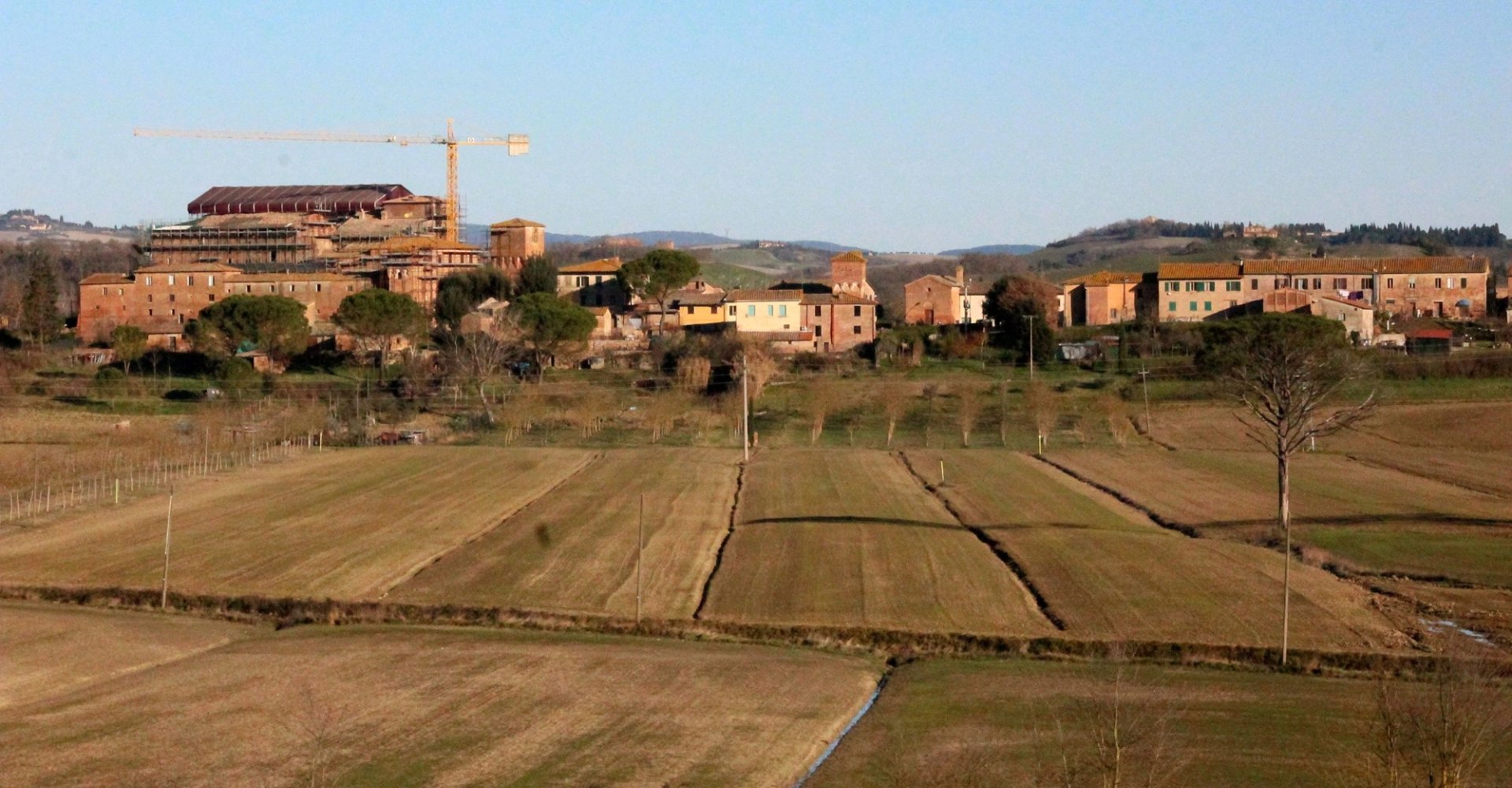Grancia di Cuna
Discovering Grancia di Cuna, the oldest and best-preserved example of a medieval fortress and estate
The imposing mass of the Grancia di Cuna is the best-preserved example of a medieval fortified farm. It is easily identifiable thanks to the characteristic colour of the red bricks with which it was built and is also one of the most interesting architectural complexes of Tuscany.
There is evidence of a ‘Spedale’ in the Monteroni d'Arbia area as early as the 12th century. It was dedicated to welcoming pilgrims and merchants travelling along the pilgrims path, the via Francigena, which passed through the nearby Arbia. The whole area came under Sienese rule in the 13th century except for the “small estates at Cuna and Castelluccio”, which were donated to the Hospital of Santa Maria della Scala, one of the most powerful institutions of the time. From then, Grancia developed into a small, independent walled hamlet, with gates and towers, houses and a farm-fortress in the centre.
In 1314, the construction of the new barn and the renovation of the church dedicated to Saint Giacomo and Saint Cristoforo began. In the 14th century, deep seated political and military instability necessitated the need to safeguard the grain reserves and so the barn was fortified. These fortified country barns were called 'Grancia'.
The Grancia consists of one large square building with scarp walls and two corner towers which were built to defend the grange to the south. The main entrance opens into an ‘L’ shaped courtyard from which it’s possible to reach the interior rooms and storerooms via a ramp that makes it easy to bring cattle in. It is a fortified farm surrounded by fourteenth century walls. A second defensive wall encircles the first and encompasses the farm and village houses. The main entrance of this second wall is still intact.
Cuna wasn’t sacked until 1554 by Austrian-Spanish troops. During the second half of the 16th century, a roof was added to the farm and to the towers that covered the pre-existing battlements. The main house, which lies between the two city walls, is from the 17th century.
